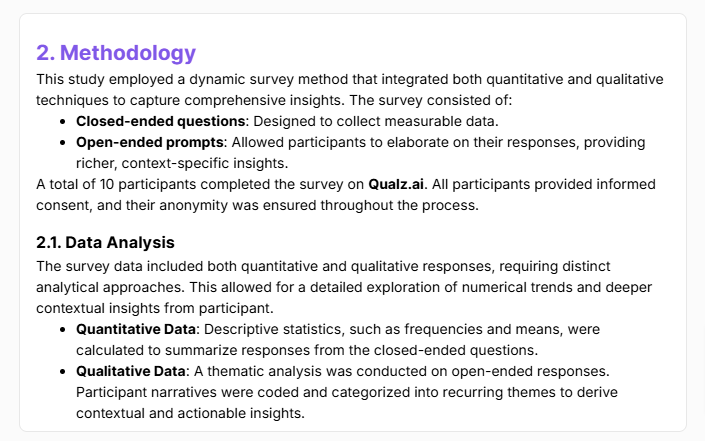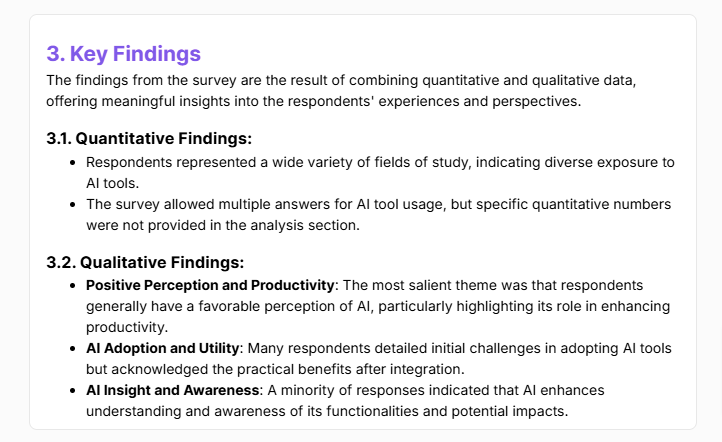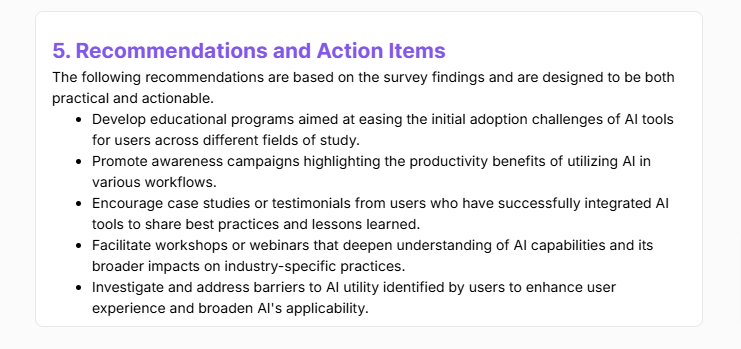Welcome to the Dynamic survey reports ! This guide is designed to make understanding each part of the report clear and straightforward. Here’s a breakdown of what each section covers and how it all fits together.
Introduction #
Once you collect your survey responses, either with human responses or through AI participants, you can easily create overview reports in Dynamic Survey.
This section gives an overview of the survey:
- Title and Subject: The focus of the survey.
- Target Audience: Who participated in the survey.
- Problem Statement: The issue or topic the survey addresses.
Example: “The survey titled ‘Customer Preferences in Online Shopping’ explored user needs and challenges, targeting frequent online shoppers to identify key areas for improvement.”

Methodology #
This part explains how the survey was conducted:
- Survey Type: Was it quantitative (focused on numbers) or qualitative (focused on insights)?
- Question Formats:
- Closed-ended (e.g., multiple-choice, yes/no).
- Open-ended (e.g., detailed written responses).
- Participation Details: The number of people who completed the survey.
Example: “A combination of closed-ended and open-ended questions was used. A total of 250 participants completed the survey.”

Key Findings #
This section summarizes the survey results:
- Quantitative Results: Statistics and percentages.
- Qualitative Insights: Themes and opinions shared by participants.
Example: “85% of respondents highlighted free shipping as a priority, and many suggested enhancing customer support response times.”

Conclusion #
Here, the survey’s main outcomes are summarized:
- Overall Results: The general findings of the survey.
- Emphasis Points: Key concerns or preferences highlighted by participants.
- Improvement Areas: Insights into where enhancements are needed.
Example: “The survey results show a strong preference for faster delivery options and streamlined website navigation.”

Recommendations & Action Items #
Based on the survey findings, this section provides actionable suggestions:
- Recommendations: Practical steps to address identified issues.
- Action Items: Clear, implementable tasks to improve outcomes.
Example:
- Improve delivery tracking systems to enhance customer satisfaction.
- Introduce a 24/7 chatbot for quicker issue resolution.
- Simplify the user interface for better accessibility.




